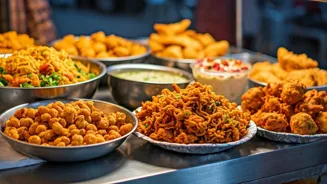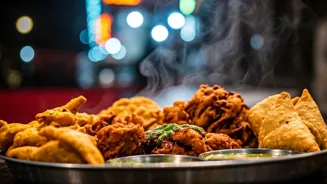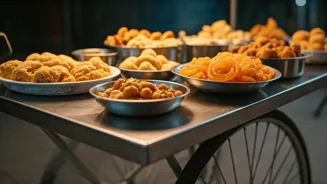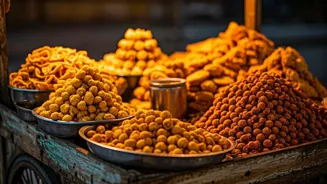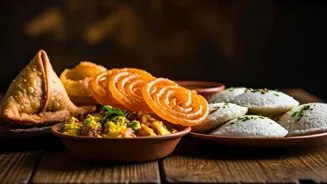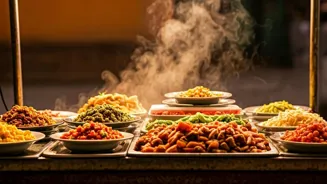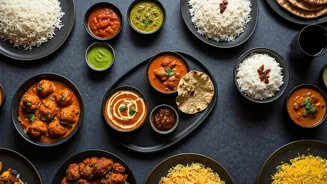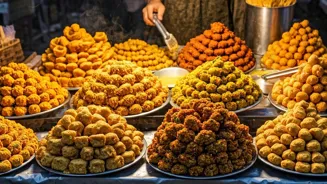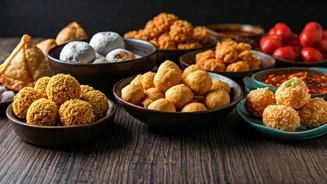The Viral Encounter
A recent viral video showcased a foreign YouTuber's adventurous exploration of Indian street food. The YouTuber, driven by curiosity and a desire to experience
local culture, decided to sample some of the most famous, yet often perceived as 'dirty,' street food offerings. The footage quickly gained traction online, capturing the attention of viewers globally. The video presented a raw and unfiltered reaction to the food's taste, preparation methods, and overall environment, prompting discussions on hygiene and cultural differences. This foreign YouTuber's foray into the street food scene offered a unique lens through which to view India's culinary landscape, sparking conversations and generating fascination.
Unveiling the Flavors
The core of the video involved the YouTuber tasting a variety of street food items, known for their distinctive flavors. The video likely included popular snacks and dishes, each with a unique blend of spices and ingredients. The YouTuber's reactions were honest, ranging from surprise to pure enjoyment. While the video's primary appeal might be the novelty of the dishes, it also highlighted the diversity of Indian cuisine. Viewers saw how flavors and presentation varied across different regions and vendors. The food, often prepared in front of the customer, underscored the importance of fresh ingredients and traditional cooking techniques. The YouTuber's experience aimed at providing insight into the taste of these street foods.
Hygiene Observations
A critical aspect of the video was the YouTuber's commentary on the hygiene levels encountered. The term 'dirty street food' itself indicates the common perception. The video likely showcased the conditions of the food stalls, the preparation processes, and the overall cleanliness of the environment. The YouTuber's reactions were candid, reflecting a contrast between the appealing food and the sometimes less-than-ideal hygienic standards. This aspect sparked debates, comparing the experience with Western standards. The video served to illuminate a complex reality about street food and offered a chance to analyze how cultural norms and hygiene perceptions can diverge.
The Viral Impact
The video’s journey to viral status demonstrated its appeal to a broad audience. The reasons for its popularity were multi-faceted, including the novelty of seeing a foreigner experiencing local food, and the candid portrayal of reactions to the unfamiliar tastes. The video likely encouraged discussions about cultural exchange and highlighted the appeal of street food. Many viewers engaged in online debates and personal experiences, sharing perspectives, and raising awareness about the broader implications of the video. The YouTuber's experience sparked interest and conversation, contributing to a wider understanding of India's food culture.
Cultural Perspectives Explored
Beyond the taste and hygiene discussions, the video offered insights into cultural differences. The YouTuber's reactions and commentary reflected a Western viewpoint that contrasted with the everyday experiences of local street food consumers. This cross-cultural interaction underscored the importance of context and perspective when assessing culinary experiences. The video likely highlighted how perceptions of food preparation and cleanliness can vary significantly based on cultural background. The resulting dialogue promoted understanding of diverse cultural practices and encouraged viewers to consider these differing points of view.
A Street Food Legacy
The video ultimately contributed to a greater appreciation of India's street food legacy. The 'dirty street food' label can be seen as both a criticism and a badge of honor, encapsulating the blend of risk and reward that defines this culinary form. Despite the hygiene concerns highlighted, the video acknowledged the unique flavors and cultural significance of these dishes. It sparked more in-depth discussions about balancing health concerns with the love of the food. This video served as a reminder of how street food is more than just a meal; it’s a cultural experience, an adventure, and a celebration of life.
